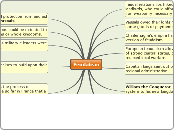Feudalism
Feudal relationships linked military elites,mostly landlords, who could afford the horses and iron weaponry necessary to fight.
Vassals owed their lords military service, and some goods or payments
Charlemagne's empire had a more stable version of feudalism.
European feaudalism allowed the development of strong central states, but it also gradually reduced local warfare.
Capetian kings sent out officials to aid in regional administration
William the Conqueror, extended his feudal system to his new kingdom of of England in 1066.
He tied the great lords of England to his royal court by bonds of loyalty.
He used some royal officials called sheriffs, to help supervise the administration of justice throughout the kingdom.
William and his succesors merged feudlism principle with a more centralized approach, including a standarized national law code issued by the royal code.
In Europe kings often chose urban busines or professional people to staff their bureaucracies because they would be more loyal than feudal nobles.
Greater lords provided protection from and aid to lesser lords called vassals
Feudal relationshipos could be extented to cover large regions or whole kingdoms.
Most of Chatlemagne's military e.leaders were awarded with estates.
Kings could use feudalism to build upon their power.
Kings controlled many serf- stocked manors directly, and they held most other local landlords as vassals.
produced better armies and revenues.
Kings formed feudal links with other lords in other parts of France, usually through marriage alliances, and that brought more territory under their control.
By early 14th century, the process of centralization had gone so far in France that a king could claim rights to make the church pay taxes(which caused great conflict)
Subtopic
